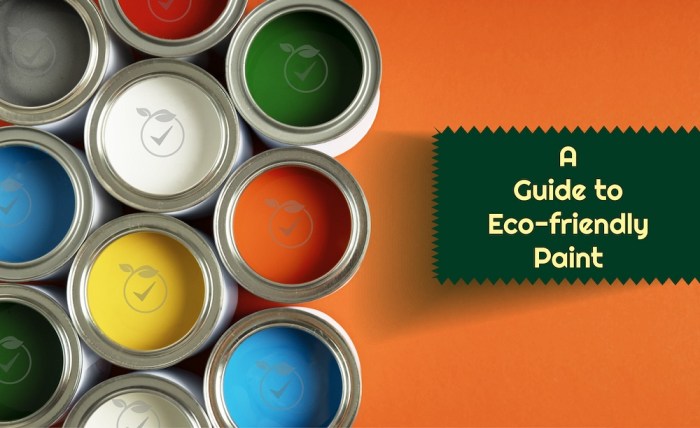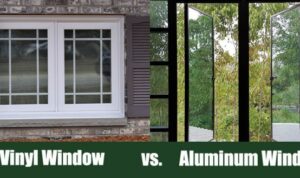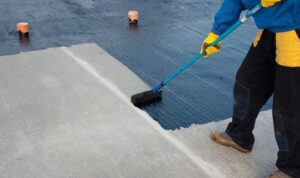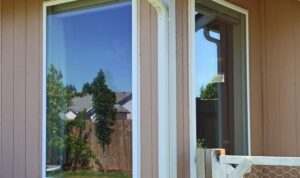Embark on a journey through the world of eco-friendly house paint options, where sustainability meets style and innovation. Discover the key aspects of environmentally conscious painting choices that not only enhance your living space but also contribute to a greener planet.
Delve into the details of what makes eco-friendly house paint a superior choice for your home, from ingredients to application techniques, as we uncover the secrets of this eco-conscious trend.
Eco-Friendly House Paint Options
Choosing eco-friendly house paint is not only beneficial for your health but also for the environment. These paints are made using natural ingredients and have lower levels of volatile organic compounds (VOCs), reducing harmful emissions into the atmosphere.
Key Characteristics of Eco-Friendly House Paint Options
- Low VOC content: Eco-friendly paints have significantly lower VOC levels compared to traditional paints, making them safer to use indoors.
- Natural ingredients: These paints are often made from natural materials like plant oils, clay, and minerals, minimizing the use of synthetic chemicals.
- Biodegradable packaging: Many eco-friendly paint brands use recyclable or biodegradable packaging to reduce waste.
Popular Eco-Friendly House Paint Brands
- Benjamin Moore Natura: Known for its low odor and zero VOC formula, this paint is a popular choice for environmentally conscious consumers.
- ECOS Paints: Offering a wide range of colors and finishes, ECOS Paints is known for its non-toxic and VOC-free products.
- Earth Pigments Company: Specializing in natural mineral paints, this brand provides a sustainable and eco-friendly alternative to traditional paints.
Benefits of Using Eco-Friendly House Paint
- Healthier indoor air quality: With lower VOC levels, eco-friendly paints help improve indoor air quality and reduce the risk of respiratory issues.
- Reduced environmental impact: By choosing eco-friendly paints, you contribute to reducing air pollution and minimizing the use of harmful chemicals in the environment.
- Long-lasting results: Eco-friendly paints are known for their durability and long-lasting finish, ensuring that your walls stay looking fresh for years to come.
Ingredients and Composition
When it comes to eco-friendly house paint, the ingredients used play a crucial role in its overall impact on the environment and health. Let's delve into the common ingredients found in eco-friendly house paint and how they compare to traditional paint options.
Common Ingredients in Eco-Friendly House Paint
- Natural pigments: Eco-friendly paints often use natural pigments derived from minerals, plants, or clay instead of synthetic dyes.
- Plant-based binders: Instead of petroleum-based binders, eco-friendly paints utilize plant-based alternatives like linseed oil or soy to hold the paint together.
- Low or zero VOCs: Volatile Organic Compounds (VOCs) are harmful chemicals released into the air by traditional paints. Eco-friendly paints contain minimal to zero VOCs, making them safer for indoor air quality.
- Recycled materials: Some eco-friendly paints incorporate recycled materials into their composition, reducing waste and environmental impact.
Differences in Ingredients from Traditional Paints
Eco-friendly house paint ingredients differ from traditional paints mainly in their use of natural, plant-based, and low VOC components. Traditional paints often contain synthetic chemicals, high levels of VOCs, and harsh solvents that can be detrimental to both health and the environment.
Impact on Indoor Air Quality and Health
The use of eco-friendly paint ingredients significantly improves indoor air quality by reducing harmful emissions of VOCs. This leads to a healthier living environment, especially for individuals sensitive to chemical exposure or with respiratory conditions. Moreover, eco-friendly paint ingredients are generally non-toxic and pose minimal health risks compared to traditional paint ingredients.
Durability and Performance Comparison
While some may question the durability of eco-friendly paint, advancements in technology have made these paints just as durable as their conventional counterparts. Eco-friendly paint ingredients can provide excellent coverage, color retention, and overall performance, proving to be a sustainable and effective choice for home painting projects.
Application and Techniques

When it comes to applying eco-friendly house paint, there are specific techniques and considerations to keep in mind to ensure a successful and sustainable painting project.
Preparing Surfaces
Properly preparing surfaces before painting with eco-friendly options is crucial for achieving the best results
- Clean the surface thoroughly to remove any dirt, dust, or grease that could affect the paint's adhesion.
- Repair any cracks, holes, or imperfections on the surface before painting to ensure a smooth finish.
- Use eco-friendly primers or sealers to enhance adhesion and durability of the paint.
- Sand the surface lightly to create a better bond between the paint and the surface.
Application Process
When applying eco-friendly house paint, consider the following techniques and considerations:
- Stir the paint thoroughly before application to ensure consistent color and texture.
- Use high-quality brushes, rollers, or sprayers for a smooth and even application.
- Apply multiple thin coats of paint instead of one thick coat to prevent drips and ensure proper coverage.
- Follow the manufacturer's instructions for temperature and humidity conditions during application to achieve the best results.
Drying Time and Curing Process
Eco-friendly paints typically have a similar drying time to conventional paints, but the curing process may vary. Here are some insights on drying time and curing process:
- Eco-friendly paints may dry faster due to their low VOC content, but they still require adequate drying time between coats.
- Allow the paint to cure fully before exposing it to heavy wear or cleaning to ensure maximum durability.
- Optimal curing time may vary depending on the type of paint and environmental conditions, so follow the manufacturer's recommendations for the best results.
Color Options and Finishes
When it comes to eco-friendly house paint, there is a wide range of color options and finishes available to suit every taste and style. These paints are not limited to dull or muted colors; you can find vibrant shades and rich hues that are just as beautiful as traditional paints.
Color Vibrancy and Finish Quality
Eco-friendly house paints are known for their excellent color vibrancy and finish quality. In fact, some eco-friendly paints can even outperform traditional paints in terms of durability and longevity. The finish of these paints can range from matte to satin to glossy, allowing you to achieve the look you desire for your space.
Limitations and Special Considerations
While eco-friendly paints offer a wide range of colors and finishes, there may be some limitations to consider. For example, some natural pigments used in these paints may not be as colorfast as synthetic pigments, which could lead to slight color changes over time.
Additionally, certain colors may be harder to achieve with eco-friendly ingredients, so it's important to discuss your options with a professional before making a decision.
Choosing the Right Color and Finish
When selecting colors and finishes for different rooms or surfaces, consider the lighting conditions, the size of the space, and the overall aesthetic you want to achieve. Lighter colors can make a room feel more spacious, while darker colors can create a cozy atmosphere.
Matte finishes are great for hiding imperfections, while glossy finishes can add a touch of elegance to any room. Experiment with different combinations to find the perfect color and finish for your home.
Last Point
As we conclude our exploration of eco-friendly house paint options, it's evident that making environmentally responsible choices can transform the way we think about home improvement. Embrace the beauty of sustainable living with these eco-friendly paint solutions that redefine the essence of modern design.
Expert Answers
What makes eco-friendly house paint different from traditional paint?
Eco-friendly house paint is free from harmful chemicals and volatile organic compounds (VOCs) that can have a negative impact on indoor air quality and the environment.
Are eco-friendly paint options as durable as traditional paints?
Yes, eco-friendly paints are formulated to be durable and long-lasting, offering comparable performance to conventional paint options.
How do I choose the right color and finish for my space with eco-friendly paint?
Consider the lighting conditions and the overall aesthetic of the room when selecting colors and finishes to ensure a cohesive and visually pleasing result.












